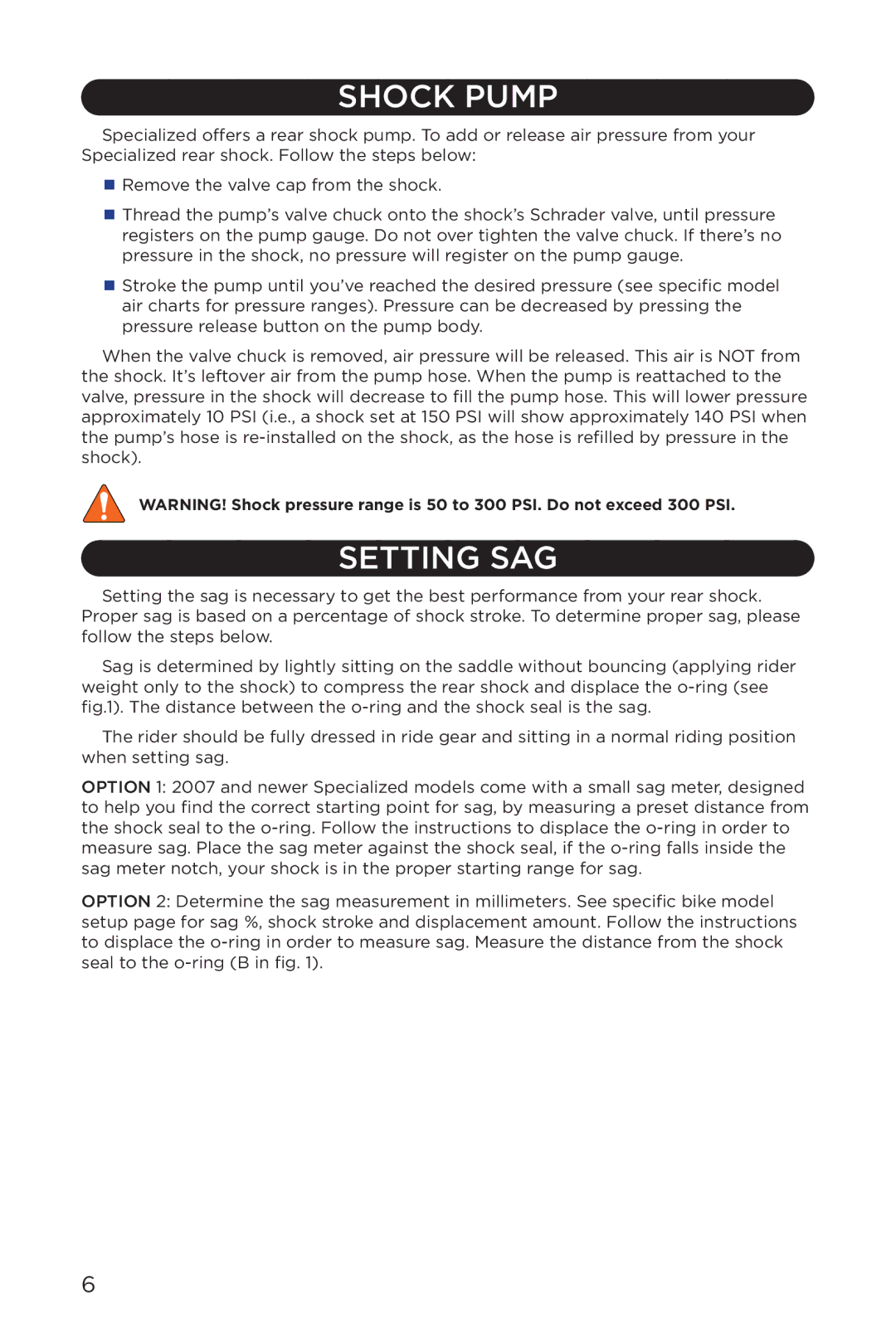
SHOCK PUMP
Specialized offers a rear shock pump. To add or release air pressure from your Specialized rear shock. Follow the steps below:
Remove the valve cap from the shock.
Thread the pump’s valve chuck onto the shock’s Schrader valve, until pressure registers on the pump gauge. Do not over tighten the valve chuck. If there’s no pressure in the shock, no pressure will register on the pump gauge.
Stroke the pump until you’ve reached the desired pressure (see specific model air charts for pressure ranges). Pressure can be decreased by pressing the pressure release button on the pump body.
When the valve chuck is removed, air pressure will be released. This air is NOT from the shock. It’s leftover air from the pump hose. When the pump is reattached to the valve, pressure in the shock will decrease to fill the pump hose. This will lower pressure approximately 10 PSI (i.e., a shock set at 150 PSI will show approximately 140 PSI when the pump’s hose is
WARNING! Shock pressure range is 50 to 300 PSI. Do not exceed 300 PSI.
SETTING SAG
Setting the sag is necessary to get the best performance from your rear shock. Proper sag is based on a percentage of shock stroke. To determine proper sag, please follow the steps below.
Sag is determined by lightly sitting on the saddle without bouncing (applying rider weight only to the shock) to compress the rear shock and displace the
The rider should be fully dressed in ride gear and sitting in a normal riding position when setting sag.
OPTION 1: 2007 and newer Specialized models come with a small sag meter, designed to help you find the correct starting point for sag, by measuring a preset distance from the shock seal to the
OPTION 2: Determine the sag measurement in millimeters. See specific bike model setup page for sag %, shock stroke and displacement amount. Follow the instructions to displace the
6
